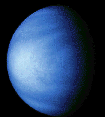This is an image of Venus.
Click on image for full size
NASA
The Cooling of Venus
The following may be the history of Venus.
- Venus formed about 4 Billion Years ago.
- at the conclusion of forming it continued to be bombarded with leftover material. Many planets still bear the remains of this activity by showing many craters on the surface. Activity on the surface can act to change the craters.
- Venus warmed from inside, and separated into layers. Because Venus is close to the sun, the atmosphere formed differently than did the Earth's, as sugggested by the Goldilocks idea.
- After that, Venus started cooling down. The crust began to thicken, just like jello hardens when it is being made. The hardening crust prevented continental drift. This also prevented the recycling of the atmosphere.
- Despite the thick crust, surface activity, including volcanism, may continue to this day as Venus continues to cool.
You might also be interested in:

How did life evolve on Earth? The answer to this question can help us understand our past and prepare for our future. Although evolution provides credible and reliable answers, polls show that many people turn away from science, seeking other explanations with which they are more comfortable.
...more
As the process which formed them came to an end, the planets may have been left in either of the following two states: very warm, separated into layers, with lots of water on the surface, with volcanic
...more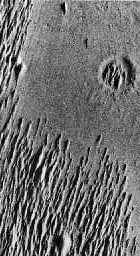
Over the course of time there are many things which can cause the surface of a planet to change its appearance. winds, as shown in the example from the Martian surface Monument Valley on Earth is an example
...more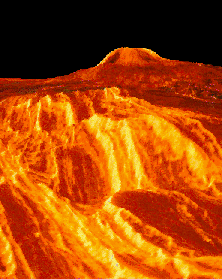
Unlike the Earth's crust, the crust of Venus is very rigid. On Earth, the lithosphere can be pushed aside in response to the warmth of the Earth. The crust then subducts, melts, and becomes part of the
...more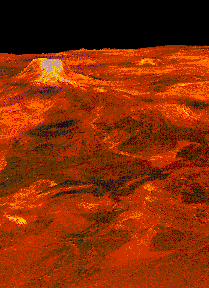
The Magellan mission to Venus confirmed that the surface of Venus is definitely volcanic. As shown in this picture, lava flows extend to hundreds of miles across the plains in the foreground. The surface
...more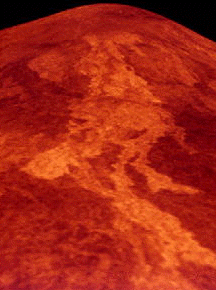
The Earth-planets formed with the gathering of rocky material and volatiles out of the primitive solar nebula. As they finished forming, the surface continued to be hit by the remnant of planetary material
...more
Like Mars, there is no plate tectonics on the surface of Venus. The surface of Venus does not *seem* to have changed or moved in billions of years. Unlike the case of Mars, however, careful examination
...more
One reason scientists think that Venus has a thick crust comes from the shape of the volcanoes of Venus. (This is a different reason than in the case of Mars). In the long time in which the volcanoes exist,
...more


